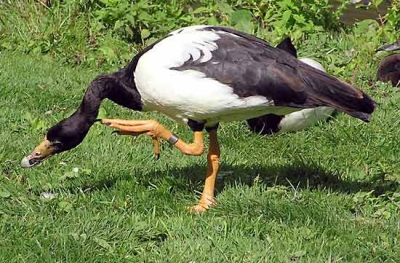
Preening is common among arachnids and consists of cleaning the legs and palps by passing them through the chelicerae. In some species protection and escape from predatory enemies is made possible by the ability of a seized limb to detach from the body.
The uropygial gland, or preen gland, is an essential part of preening. This gland is found near the base of the tail and produces an oily, waxy substance that helps waterproof feathers and keep them flexible. While preening, birds spread this oil to each feather so they are evenly coated and protected. Some types of birds, including owls, pigeons, parrots, and hawks, lack a uropygial gland. Instead, these birds have specialized feathers that disintegrate into powder down, which serves the same purpose as preen oil. Birds that produce powder down are less likely to bathe or immerse themselves in water and do not require the stronger waterproofing that preen oil provides.
Birds use their bills and feet to preen each feather on their body, methodically nibbling or stroking every feather from its base to its tip to get it aligned just so. Birders are familiar with different contortions birds will use in order to reach every feather, and it is not unusual to see a bird in an unusual and odd position while preening.
Credit : Spruce
Picture Credit : Google




